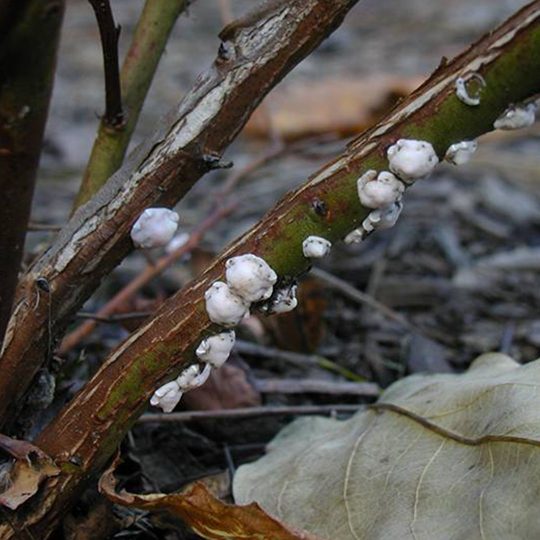Tree Pest Spotlight: Tree Scale
How to Identify and Treat Tree Scale
Posted
August 24, 2017

How do you treat an insect that doesn’t look like an insect? If it looks like small bumps growing on twigs and branches of your tree, it may be tree scale. These sap-sucking insects prey on most plants and trees, and some can destroy the foliage they feed on. So, what can be done to treat tree scale? Read on to find out.
Types of Tree Scale
There are two main types of tree scale—soft and armored. Both use long, needle-like mouthparts to suck out sap from the host tree or plant. Here’s how you can tell the two apart:
Soft Scales
- Produce a sugary liquid called honeydew
- Usually larger than armored scales
- Shaped like rounded bumps
- Don’t have a shell, they secrete a cotton-like or waxy substance over their bodies for protection.
Armored Scales
- Don’t produce honeydew
- Shaped like a flattened sphere
- Have a hard protective shell.
Signs of Tree Scale
As described above, different species of tree scale vary in appearance. During early growth stages, these six-legged insects are smaller than a pinhead and crawl around looking for food. Adult scales become stationary as they feed on one spot.
You may notice a coating of honeydew on different surfaces—from picnic tables to parked cars under the infected tree. This is a sign of soft scale. While it may seem like insignificant damage, the sticky substance can attract fungus and other bugs to the tree, as well as discolor the surface of the plant and any object it touches.
Other signs of tree scale include:
- Branches covered with small bumps—which are actually the insects
- Yellow or brownish leaves
- Premature leaf drop
- Twig or branch dieback
- Slower growth
- Weaker trees are more susceptible to disease
- Severe infestation can kill the plant.
Treating Tree Scale
Even if you don’t notice tree scale right away, there are ways of preventing and treating these pests:
- A strong, healthy tree is better equipped to fight off diseases and pests. Help maintain the plant’s health with regular watering and proper pruning.
- Inspect any new plants and trees for infestations before you bring them into your yard. If you notice anything starting to grow, prune back the infected branches.
- Because adult scales remain in the same place, they are an easy food source for predatory insects like ladybugs and lacewing.
- Scale insects are hard to treat chemically because their of their protective shells or coatings. Try to catch them early on when they are most vulnerable to treatments—after they hatch while they are moving around looking for a place to feed.
- Horticultural oils and insecticidal soaps are less toxic than chemicals. Oils smother the insect during any stage, while the soap acts as a pesticide used to kill the larvae only. These methods usually require repeated applications.
- If you need to treat a large tree, you can try injecting insecticides into the soil or the trunk. This method is more expensive than others, but well worth it because of the success rate.
For more information about identifying, treating, and preventing tree scale and other pests, contact Elite Tree Care at 610-935-2279.